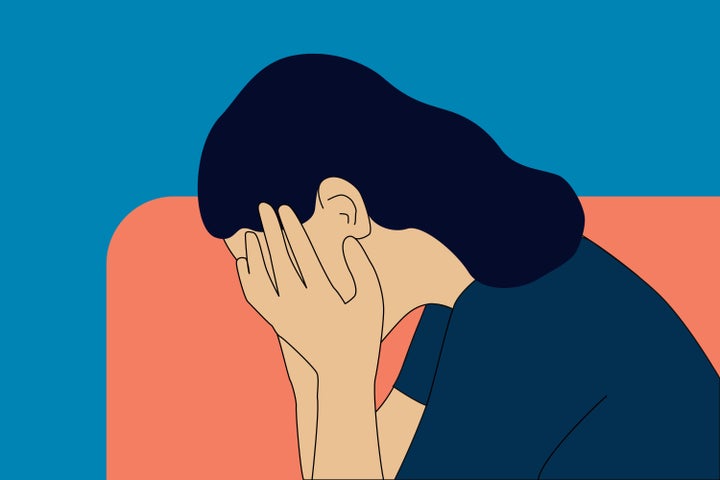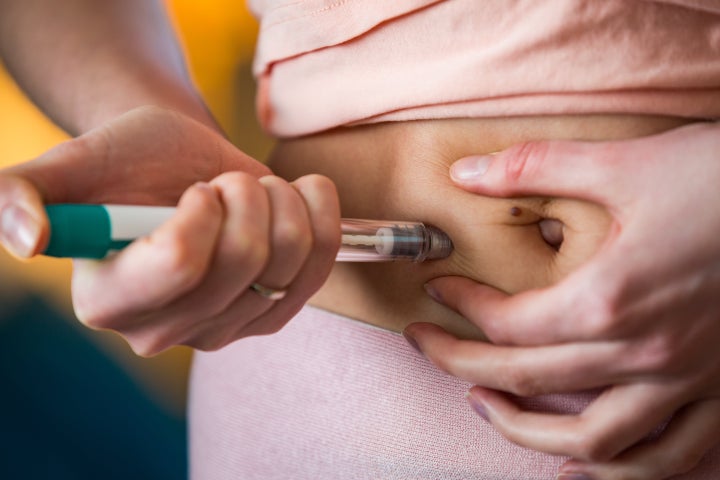“I was in excruciating pain, I was bloated and felt really sick. The doctor had said I’d be able to go about my normal business but I missed work, I couldn’t do anything and I had to stay in bed for six days.”
Carol*, 39, from London, is an IVF success story. On her second cycle, she became pregnant and she now has a joyful toddler. But during her first cycle, as well as the invasive trips to the doctors and grimacing through the daily self-administered progesterone injections, she developed what her doctors called a “borderline” ovarian hyper stimulation syndrome (OHSS).
The symptoms Carol experienced are some of the many side-effects of OHSS, which can range from nausea and vomiting to severe bloating and blood clots. In the worst cases, OHSS can be fatal – according to government records, it has killed two British women in the past 15 years.
Statistics from the Human Embryology and Fertility Agency (HFEA), the fertility industry regulator that is required to record all incidences of OHSS, suggest a third of women undergoing IVF will develop mild OHSS. The reason IVF poses this risk is because part of the process involves provoking the woman’s body to produce a lot of eggs at once.
Gonadotropins – mainly follicle stimulating hormone (FSH) and leutinising hormone (LH) – are injected into the body to help harvest eggs. Those eggs are removed from the body so that they can be fertilised in a laboratory, developed into embryos, then implanted into the patient’s womb. Ideally, the ovaries respond to the gonadotropins by producing anywhere from eight to 15 eggs, depending which doctor you’re asking, but sensitive ovaries can respond by producing over 20 eggs at once, in turn causing harm to their bodies.
Data released by the HFEA after a parliamentary request by Siobhain McDonagh, MP for Mitcham and Morden, found that between 2013 and 2017, 20 or more eggs were collected in 21,244 cycles, 30 or more in 1860 cycles, and in some cases, more than 50 eggs were collected from a single cycle.

In Carol’s case, her body had produced 23 eggs. Only six were viable, and of those, only three became successful embryos. Carol was at particular risk of OHSS, because she has polycystic ovary syndrome (PCOS), which can mean that even without additional hormones the body is prone to releasing more eggs at once. Women under 30 are also at heightened risk of OHSS.
“I was warned beforehand of the risk, and told I’d get a lower dose because of that,” says Carol, who was 37 at the time of that IVF round. “But clearly the dose was still too high. I was so shocked because I wasn’t prepared for it, I genuinely thought something had gone wrong,” she adds.
“I thought I was going to die. My moods were god awful too.” Things got so bad, she was “ready to ditch the IVF altogether, even after coming so far.”

Because PCOS affects around 20% of women in the UK and is one of the leading causes of female infertility, some IVF providers, as well as women’s healthcare rights campaigners and politicians, argue that lower doses of hormones should be the standard for women undergoing IVF.
But the consequences of this little-known side-effect of the treatment – in the context of a fertility industry that is worth £300m a year in the UK alone – are significant. A 2019 study found that the NHS is having to pay over £120m per year to attend to illnesses caused by IVF – and that includes OHSS. And then there’s the physical toll that OHSS takes on those who experience it.
“There was no treatment they could give me,” says Carol, “so I just had to ride it out. It wasn’t like period pains, I was in agony all over, and [even] now when I ovulate it feels more painful than it used to.”
Carol returned to the clinic – “the first day I felt better, really” – to be implanted with one of the eggs. But soon after, she miscarried. “In hindsight,” she reflects, “I do wonder if it’s because my body had just been under so much stress.”
It’s not known whether OHSS, a product of fertility treatment, can, paradoxically negatively affect fertility. The scale of the issue is also hazy. A Daily Mail study found that between 2010 and 2015, there were 4,792 admissions for OHSS in the UK, but only 256 were reported to the HFEA in that period. In light of this, there’s a split within the medical industry on how to tackle the issue.
Another study in 2014 found that, of 650,000 IVF cycles, the fewer gonadotropin hormones administered, the higher the likelihood of a live birth. In simple terms, this study called for ‘quality over quantity’ during the egg harvesting process, concluding that “physicians may wish to avoid prescribing a high dose of FSH”.
However, in a 2019 presentation designed to myth-bust OHSS, Dr Raj Mathur, consultant gynaecologist and subspecialist in reproductive medicine and surgery at St Mary’s Hospital in Manchester, said that OHSS cannot be “completely abolished” because ovarian stimulation will always increase the amount of eggs produced.
“It would be a very brave doctor who said they never saw a case of OHSS,” Dr Mathur told the Progress Educational Trust conference on assisted fertility. “Guidelines help doctors to work with patients to reduce the risk of developing OHSS and manage it, but even if you can choose how much medication you give the woman, you cannot choose how her body will respond,” he added, concluding that as women’s sensitivity varies hugely, “we cannot micromanage this”.
“IVF is a desperate market. You’re willing to do whatever and go through whatever to have a baby.”
- Carol
However, Dr Mathur also suggested OHSS rates may be lower than reports suggest, due to NHS doctors’ inability to correctly diagnose and record it. The British Fertility Society, where Dr Mathur is chair elect, stands by these comments.
The British Pregnancy Advisory Service (BPAS) doesn’t see it the same way. A spokesperson told HuffPost UK: “OHSS is a controversial issue with ongoing concerns about under-reporting to the HFEA.” They added that clinics should keep in better contact with their clients. Even as the HFEA is obliged to collect the data, this is provided by the clinics, rather than direct from the patients.
But to Carol, it’s simple. “IVF is a desperate market. You’re willing to do whatever and go through whatever to get the end result of a baby.”
One solution is increasing awareness of the condition so that women know how to spot the symptoms earlier and seek medical help if needed. Professor Adam Balen, spokesperson for the Royal College of Obstetricians and Gynaecologists, tells HuffPost UK: “It is the role of fertility clinics to provide patients with information on OHSS, the risks and symptoms so they are aware of the condition and know where and when to seek medical help if needed. Clinics should have protocols in place to ensure patients are referred for the right care if they develop this.”
But if low-dosage proponents had their way, there would be a root and branch reconsideration of how women are treated by these clinics. The booming IVF industry is currently hemmed in by laws that protect the rights of the unborn child – but not those of the prospective mother.
In the last parliament, Siobhain McDonagh brought a private members’ bill seeking legal protections of the welfare of women going through IVF, so that their physical and mental health is looked out for and that doses of hormones they’re given are recorded by the HFEA. She now tells HuffPost UK that while IVF is a “miracle” that enables many to have a child, “40 years on from the first IVF baby, the welfare of the woman is shockingly still absent from UK law.”
“This is a scandal that cannot continue to exist,” says McDonagh. “It is high time that the law ensures the welfare of women is at the heart of IVF law, so that IVF enables the celebration of new life, whilst protecting those women undergoing it.”
A spokesperson from the Department for Health and Social Care pointed out the rarity of critical cases of OHSS (none were reported in 2018) – and told HuffPost UK: “We are confident the HFEA is taking appropriate action, in partnership with fertility clinicians, to ensure the safety of patients by informing them clearly about the risks of treatments and improving hospital reporting processes, for when the condition is detected.”
Meanwhile, while Carol’s IVF is in her past, had she needed her eggs harvested again, she says: “I would have wanted the clinic to adjust what they did, because what happened wasn’t right.”
*Name has been changed. This article was amended on 18 February to accurately name the British Fertility Society, which was previously wrongly referred to as the British Fertility Association.
